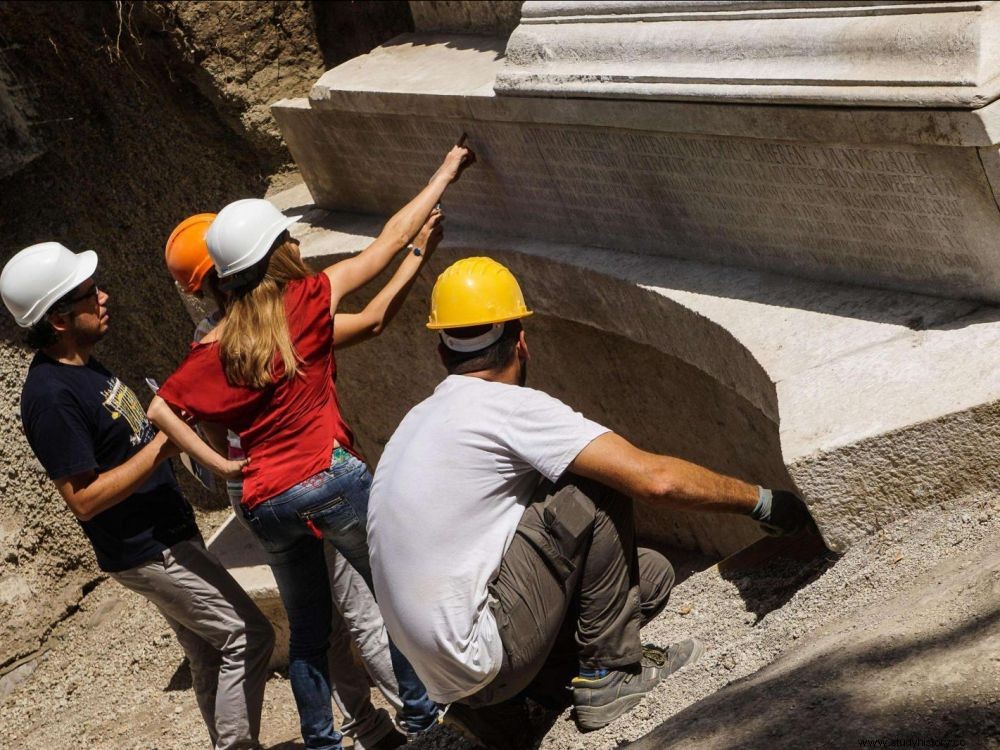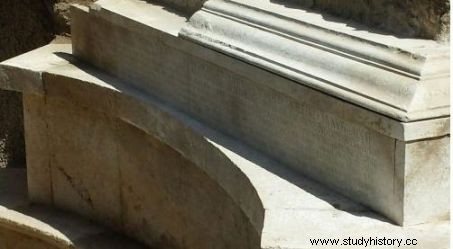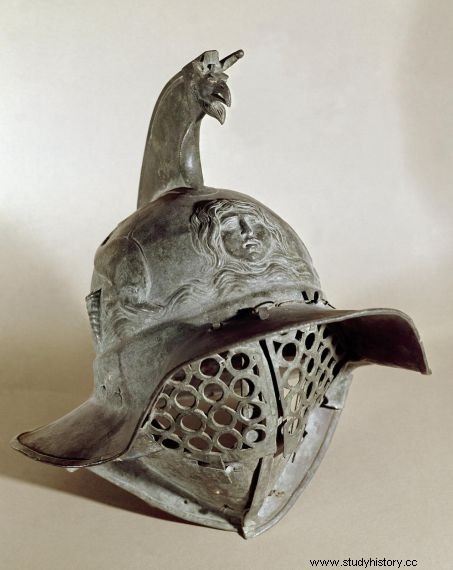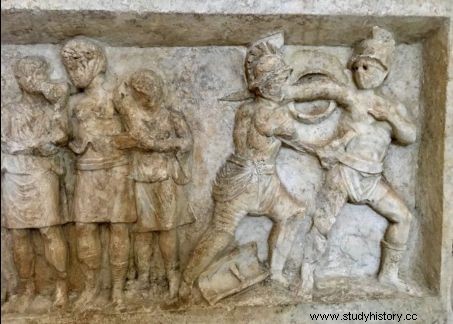A monumental burial on which is engraved the longest epitaph ever found in Pompeii (Italy) has just been unearthed.

The monumental tomb with a 4 m long epitaph was found near the Stabiae Gate, in Pompei (Italy).
Archaeology . It is once again a prestigious vestige of the past which has just resurfaced from the basements of Pompeii, the famous ancient city located south of Naples (Italy) destroyed during the eruption of Vesuvius in 79 AD. During restoration work and maintenance of administrative buildings carried out as part of the "Great Pompei Project", Italian archaeologists fortuitously unearthed near the Stabies gate, one of the entrances to the city, a monumental tomb. It could be that of Gneus Alleo Nigidius Maio , an influential figure who died a year before the disaster, known to have been one of the most important organizers of gladiator fights in the ancient city. These took place in the large 20,000-seat amphitheater.
The main stages of the deceased are described here
The marble tomb is covered with a 4-meter-long epitaph, the longest epigraphic inscription ever found in the famous UNESCO World Heritage Site. According to Napoli Repubblica daily , at the origin of the announcement of the discovery, are described there the main stages of the life of the deceased:his marriage, his banquets, his gifts, the organization of gladiatorial games or the fights with wild beasts. .

The longest epigraphic inscription found at the ancient site of Pompei . © Cesare Abbate /AP/SIPA

Gladiator helmet unearthed in Pompeii. © Luisa Ricciarini /Leemagne/AFP
Given the importance of the discovery, an official presentation to the press took place on July 26, 2017 by Massimo Osanna, Director General of the Superintendency of Pompei, Professor of Classical Archeology at the Frederic II University of Naples . This funerary monument could be linked to frescoes found in the past, depicting scenes of gladiators and processions currently preserved in the deposits of the Archaeological Museum of Naples and whose researchers did not know until then from which sector of Pompeii they came. The site has been known and explored, let us remember, since 1709...

Friezes with scenes of gladiator fights from the site of Pompeii, preserved in the deposits of the Archaeological Museum of Naples. © Courtesy Archaeological Museum of Naples
